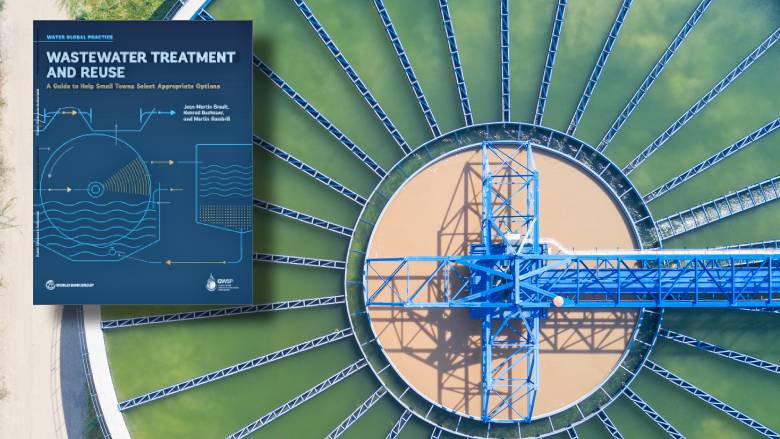Strategic Approaches to Improve Waste Water Therapy Efficiency and Lessen Ecological Impact
In the world of waste water treatment, the quest for boosted performance and minimized environmental impact is a continuous difficulty that demands critical remedies. The integration of advanced therapy innovations, energy-efficient procedures, source healing approaches, boosted nutrient removal techniques, and clever tracking and control systems stands for a diverse structure for resolving these pressing issues.
Advanced Treatment Technologies
Advanced membrane filtering systems have actually changed advanced wastewater treatment processes, substantially boosting the elimination of impurities. This modern technology has actually proven to be highly reliable in getting rid of a wide range of contaminants, consisting of drugs, hefty steels, and organic compounds, which are frequently challenging to remove via traditional treatment techniques.
Moreover, membrane purification systems supply countless benefits over traditional treatment approaches. They call for less area, produce higher-quality effluent, and are more immune to changes in influent water high quality. Additionally, these systems are very functional and can be quickly integrated into existing therapy plants or made use of as standalone systems for decentralized applications. As the demand for clean water remains to increase, the adoption of advanced membrane layer purification modern technologies is essential to make certain efficient and sustainable wastewater treatment methods.
Energy-Efficient Procedures
The assimilation of energy-efficient procedures in wastewater treatment systems is critical for optimizing resource use and decreasing operational expenses. One vital approach to boosting energy performance in wastewater therapy is the usage of advanced aeration systems, such as great bubble diffusers or surface aerators, which can enhance oxygen transfer effectiveness and lower power intake.
In addition, optimizing procedure control and automation via making use of advanced sensors and monitoring systems can improve general power efficiency by changing procedures in real-time based upon real need and problems. Executing energy audits and routinely keeping an eye on power efficiency signs are vital techniques to recognize locations for improvement and track energy-saving initiatives efficiently. Generally, the fostering of energy-efficient procedures in wastewater therapy not only profits the setting however likewise contributes to lasting price financial savings and operational sustainability.
Resource Recuperation Methods
With a focus on optimizing source use and sustainability in wastewater therapy systems, the application of resource recovery strategies emerges as a critical facet in improving operational performance. Resource recovery methods in wastewater treatment entail the identification and removal of useful resources from the waste stream, therefore turning what was as soon as taken into consideration waste into a beneficial possession. By implementing resource recuperation methods such as nutrient elimination and healing, power generation from raw material, and the production of multiple-use water, wastewater treatment plants can decrease environmental influence while maximizing effectiveness.

Boosted Nutrient Elimination Techniques
Carrying out sophisticated nutrient elimination methods is essential for enhancing the efficiency of wastewater treatment systems. One of the vital methods made use of for enhanced nutrient removal is the process of biological nutrient removal (BNR), which includes the elimination of nitrogen and phosphorus via biological processes.

In enhancement check my site to BNR, advanced therapy approaches such as membrane bioreactors (MBRs) and created marshes can additionally be employed to enhance nutrient removal go to this site efficiency. By incorporating these advanced nutrient removal strategies right into wastewater therapy industries, municipalities and systems can properly lower nutrient contamination and secure the atmosphere.
Smart Monitoring and Control Systems
Making use of sophisticated innovation, the combination of smart surveillance and control systems changes the operational efficiency of wastewater therapy facilities. These systems include innovative sensing units and information analytics to constantly keep track of key criteria such as pH levels, turbidity, liquified oxygen, and circulation rates in real-time. By gathering and evaluating this information, operators can gain valuable understandings into the efficiency of the treatment procedures, enabling positive adjustments to enhance therapy effectiveness.
Smart surveillance and control systems likewise sustain remote monitoring capacities, allowing drivers to access real-time data and control features from off-site locations. This remote access improves functional flexibility and responsiveness, allowing speedy treatments in instance of system malfunctions or variations in influent quality. In addition, the predictive maintenance capacities of these systems help protect against devices failings and reduce downtime, inevitably improving the total reliability of wastewater therapy operations (Waste Water Treatment).
Conclusion
Finally, strategic techniques such as advanced treatment innovations, energy-efficient procedures, resource recuperation approaches, enhanced nutrient removal read what he said methods, and wise surveillance and control systems play an essential duty in improving wastewater therapy performance and decreasing ecological impact. By executing these methods, wastewater treatment plants can enhance their general performance, minimize power consumption, recoup valuable sources, and make sure compliance with environmental policies. These methods are necessary for lasting and effective wastewater management techniques.

In final thought, strategic techniques such as advanced therapy innovations, energy-efficient procedures, resource recuperation techniques, boosted nutrient removal strategies, and wise surveillance and control systems play a vital role in improving wastewater therapy efficiency and reducing ecological impact.